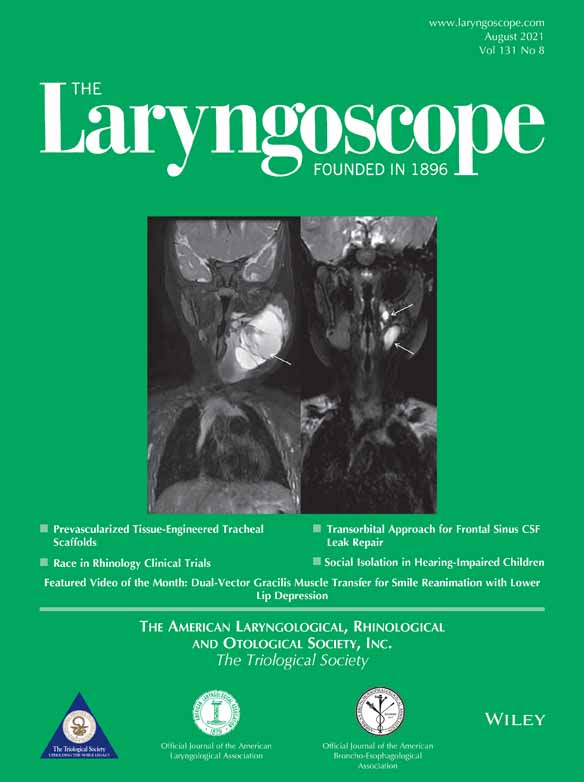Polymeric Microspheres Containing Human Vocal Fold Fibroblasts for Vocal Fold Regeneration
Editor's Note: This Manuscript was accepted for publication on September 8, 2020
Presented as a Combined Otolaryngology Spring Meetings (COSM) Virtual Poster Session: May 15–June 15, 2020. Originally accepted for poster presentation at the Annual Meeting of the American Laryngological Association at the COSM, Atlanta, Georgia, U.S.A., April 22–26, 2020, which was canceled due to COVID-19 global pandemic.
This study was supported by The National Institute on Deafness and Other Communication Disorders (NIDCD) of the National Institutes of Health (NIH), grant R01DC005788 (l.m.). Research reported in this publication was supported by the Natural Science and Engineering Science Council (NSERC) (s.p.). The authors have no funding, financial relationships, or conflicts of interest to disclose.
Abstract
Objective
Most acellular injectable biomaterials for vocal fold (VF) wound treatment have limited regenerative potential due to their fast enzymatic degradation and limited recruitment of native cells postinjection. The injection of cells as therapeutic treatment often results in apoptosis due to stresses within the needle and the immune response of the host. Degradable microspheres may improve treatment effectiveness by increasing cell residence time, shielding cells during injection, and offering early protection against the immune system response. The objective of the present study was to investigate the potential of human VF fibroblasts encapsulated in polymeric microspheres as an injectable therapeutic treatment in vitro.
Methods
Alginate, alginate-poly-L-lysine, and alginate-chitosan microspheres were fabricated using electrospraying and characterized in terms of biocompatibility, swelling, and mechanical properties as well as cytokine production.
Results
Alginate microspheres were found to have the most desirable properties for VF regeneration. They were resistant to mechanical challenges. They were found to have a stiffness similar to that reported for native VF-lamina propria. They were found to be biocompatible and increased the proliferation of fibroblasts. Human VF fibroblasts encapsulated in alginate microspheres induced the production of interleukin (IL)-8 and IL-4 at 24 hours.
Conclusion
The alginate microspheres fabricated in this study were found to offer potential advantages, as cell delivery tool. This study highlights the importance of combining biomaterials and cells to expedite the wound-healing process through cytokine production. Future work is aimed to further analysis of the wound-healing properties the microspheres.
Level of Evidence
NA Laryngoscope, 131:1828–1834, 2021




